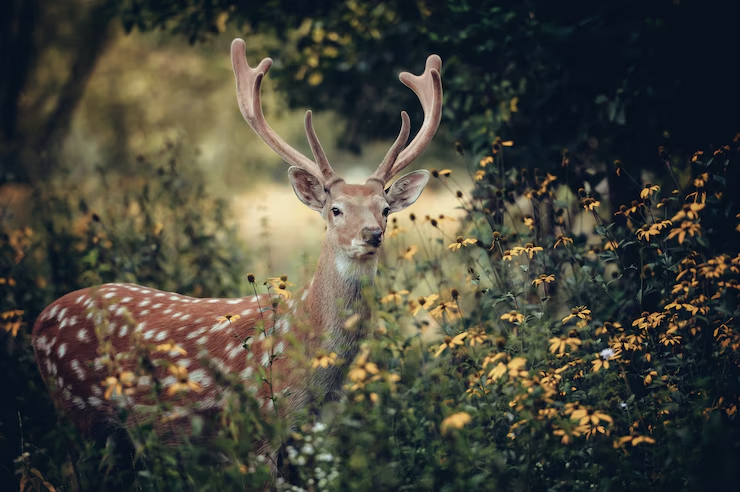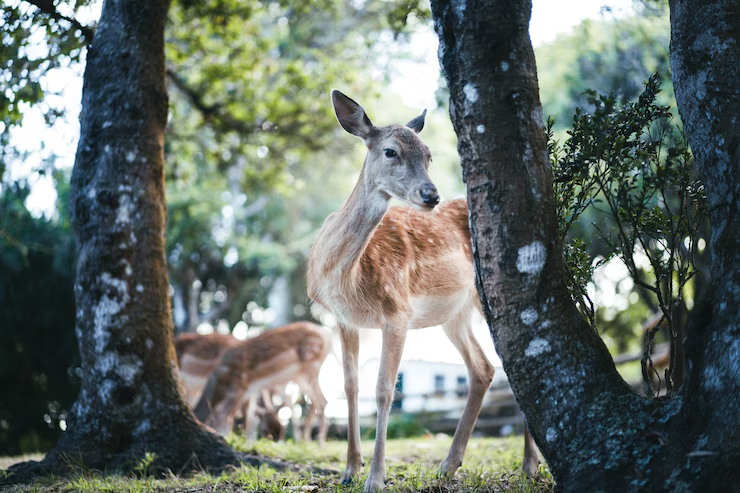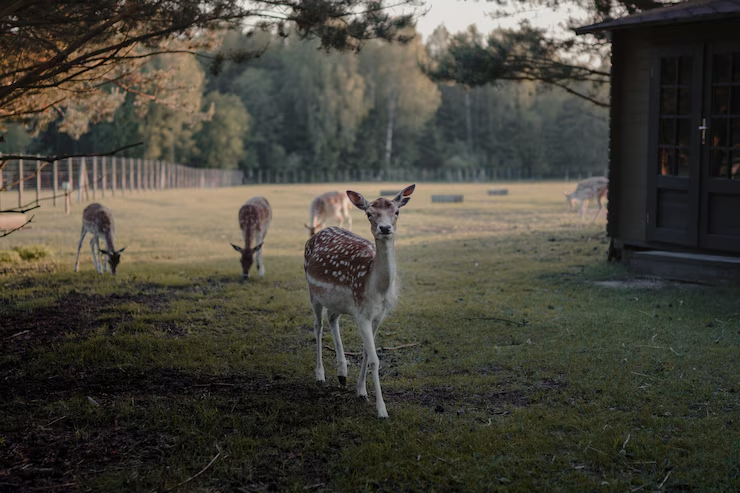I’ve always loved the peace and beauty that comes with a garden. There’s something healing about working the soil, watching flowers bloom, and harvesting vegetables. But nothing tests a gardener’s patience quite like deer. These graceful creatures might be lovely to spot in the wild, but they’re downright destructive when they make your backyard your buffet.
After years of trial and error, I’ve learned a few lessons about how to keep deer from turning my garden into their personal salad bar. If you’ve been battling nibbling intruders, these practical strategies just might save your plants and your sanity.

You Have to Understand What Attracts Deer in the First Place
before I could win the war against deer, I had to understand why they were targeting my garden in the first place. Deer are opportunistic feeders with a strong sense of smell and a taste for tender, nutrient-rich plants. My roses, hostas, and vegetable patch seemed like an open invitation to them.
Once I realized my garden was basically a neon sign, I began to rethink my approach and started working smarter, not just harder.
Start by Changing the Menu
One of the first and most effective steps I took was to reconsider my plant choices. Deer have clear preferences, and unfortunately, many of my original favorites ranked high on their list. Swapping out susceptible plants for deer-resistant ones like lavender, yarrow, and Russian sage made a surprising difference.
These plants either didn’t appeal to the deer or actively repelled them with strong scents or textures they didn’t enjoy. My garden’s aesthetic didn’t suffer because I still had plenty of color and variety, but I noticed far fewer visits from the usual culprits.
Install Physical Barriers That Actually Work
Let me be honest: deer can jump. Like, really jump. I underestimated just how high they could leap until I saw one clear my four-foot fence like it was nothing. That experience taught me that a proper deer fence needs to be at least eight feet tall to be effective.
I invested in a sturdy, tall fence around my vegetable garden, and I immediately noticed the difference. For flower beds and less vulnerable areas, I used temporary netting or individual wire cages around specific plants. These simple barriers saved my tulips and kept young saplings safe during their most vulnerable stages.
Don’t Rely on a Single Strategy
Over time, I learned that no single trick works forever. Deer are smart, and they adapt. The moment I thought I had them figured out, they found a new way in.
That’s why I rotate my methods regularly and combine several approaches. Fencing works, but pairing it with other deterrents like strong-smelling plants or motion-activated devices keeps the deer guessing. The goal is to make my garden as unpredictable and uninviting as possible.
Use Scents That Offend Their Sensitive Noses
Deer rely heavily on their sense of smell to navigate and detect danger. I’ve used this to my advantage by introducing strong, off-putting scents around my garden. I’ve had luck with commercial deer repellents made from egg and garlic, but I’ve also had success with homemade mixtures involving soap, chili powder, and essential oils.
I even hang bars of strongly scented soap from trees and shrubs. As long as I remember to reapply after rain, these odors often make the deer think twice.

Employ Motion-Activated Surprises
I used to think motion-activated sprinklers were just a gimmick until I installed one myself. The first time a deer triggered it and ran off soaked, I knew I was onto something. These devices detect movement and spray a harmless jet of water that effectively scares deer without harming them.
I’ve also experimented with motion-activated lights and noise makers. While they’re not foolproof, they do add another layer of defense that keeps the deer from feeling too comfortable.
Create the Illusion of Human Presence
Deer are naturally cautious around humans, so creating the illusion that someone is always nearby can deter them. I’ve placed old radios in the garden on a timer, so they turn on at random intervals, playing talk shows or soft music.
I’ve also used scarecrows dressed in old clothes scented with cologne or soap. While scarecrows alone don’t fool deer for long, combining them with movement and scent elements seems to make them more useful.
Use Mulch Strategically
Certain types of mulch can actually help deter deer. I began using gravel and crushed stone in pathways, and I noticed deer were less inclined to walk across these uncomfortable surfaces. I also mixed in strong-smelling mulch like cedar in some areas to create another sensory barrier.
While mulch alone won’t stop deer, it adds one more layer of difficulty for them, and that’s what I learned makes the biggest difference: layers.
Try Reflective or Shiny Objects
Reflective deterrents might sound a little strange, but they’ve proven surprisingly effective for me. Hanging old CDs, pie tins, or mirrors from branches creates flashes of light and movement that seem to make deer nervous.
The key is to change their placement now and then so the deer don’t get used to them. I’ve even added a few garden ornaments with mirrored surfaces, which help both with style and deterrence.
Build Raised Beds Where Possible
I’ve found that raised garden beds not only help with drainage and plant health but also serve as an extra obstacle for deer. While a determined deer could reach over a raised bed, the elevation seems to discourage them, especially when paired with other methods.
The physical separation makes my vegetables just a little less accessible, and in the world of deer control, every inch matters.
Take Advantage of Seasonal Behavior
Understanding when deer are most active and why helped me fine-tune my strategies. In late summer and early fall, when food in the wild is less than normal, they become especially persistent. That’s when I ramp up my defenses with extra barriers and scent deterrents.
In the spring, when new growth is everywhere, I’m especially cautious about protecting young shoots. Knowing their habits helped me anticipate problems instead of just reacting to them.
Don’t Forget About Vertical Plants
Climbing plants like beans, peas, and tomatoes can be very vulnerable to deer. I learned the hard way that deer can reach pretty high up, especially when they’re hungry. So, I started using taller trellises with netting wrapped around them and even added chicken wire to the base of some of my vertical gardens.
A combination of elevation and obstruction goes a long way toward keeping your crops intact.

Invest in Long-term Solutions
It took me years to realize that a few one-time investments could save me money and frustration in the long run. Things like tall fencing, permanent raised beds, or professional-grade repellents seemed pricey at first.
But once I added up the cost of damaged plants, wasted time, and constant replacements, the math became clear. Building my garden with deer in mind from the start would have saved me a lot of trouble. At the end of the day, I’ve learned that total deer-proofing might be impossible, but meaningful progress is absolutely within reach.
If you liked this article, here’s what to read next: Top 8 Invasive Plants to Keep Out of Your Garden